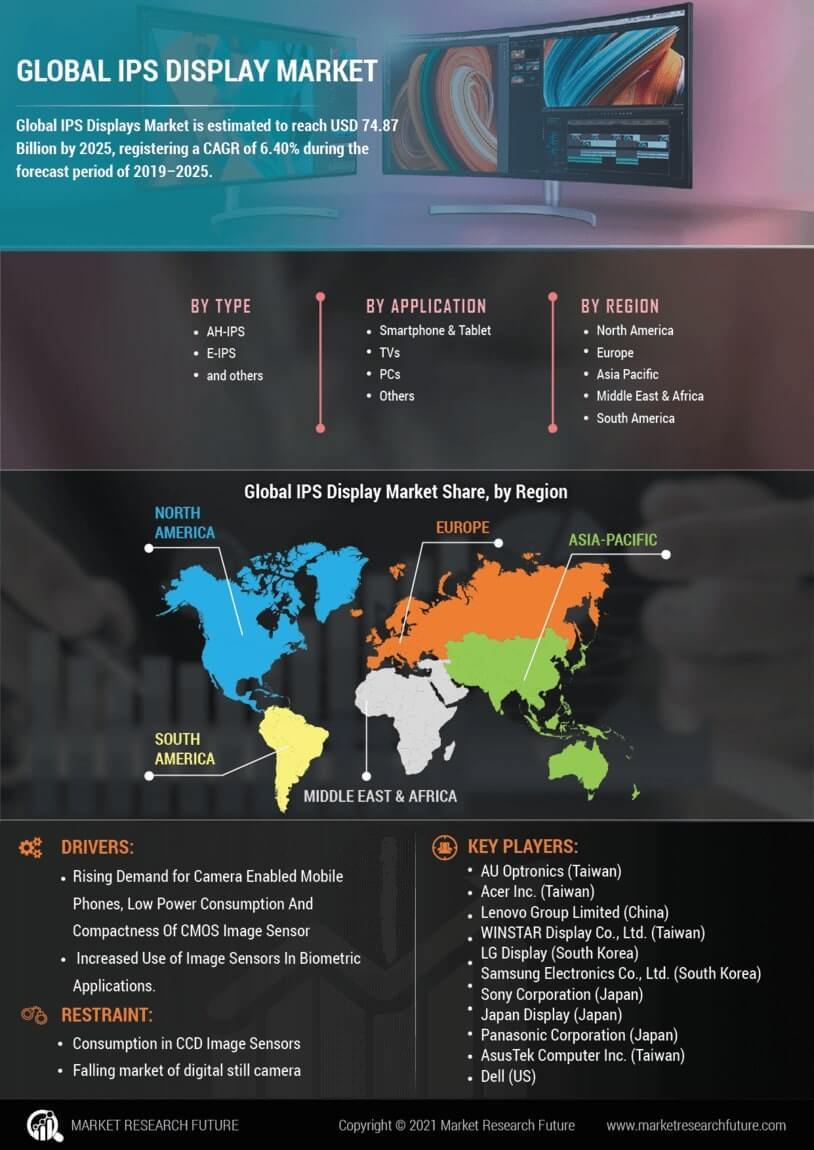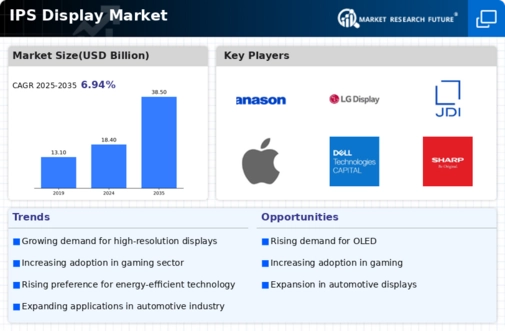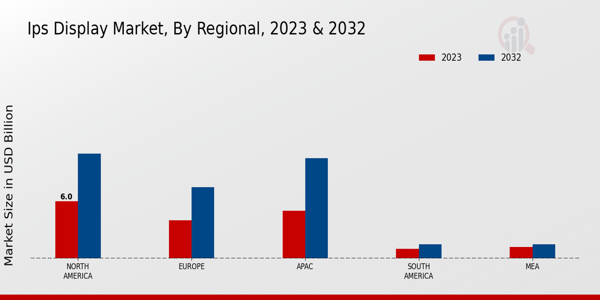Market Trends and Projections
Expansion of the Gaming Industry
The expansion of the gaming industry significantly influences the Global IPS Display Market Industry. Gamers increasingly prefer IPS displays due to their superior color accuracy and fast response times, which enhance the overall gaming experience. The rise of competitive gaming and esports has further fueled demand for high-performance displays. As the gaming market continues to grow, with projections indicating a substantial increase in revenue, the need for advanced display technologies becomes paramount. This trend is expected to contribute to the market's growth, as gamers seek displays that provide immersive visuals and quick refresh rates, solidifying the position of IPS technology in the gaming sector.
Growing Focus on Energy Efficiency
The growing focus on energy efficiency is increasingly shaping the Global IPS Display Market Industry. As environmental concerns gain prominence, consumers and manufacturers alike prioritize energy-efficient display solutions. IPS displays, known for their lower power consumption compared to traditional LCDs, align with this trend. This shift is particularly relevant in sectors such as corporate and educational environments, where energy savings can lead to significant cost reductions. Manufacturers are responding by developing IPS panels that not only deliver high performance but also adhere to energy efficiency standards. This alignment with sustainability goals is likely to enhance the market's appeal and drive further growth.
Increased Adoption of Smart Devices
The increased adoption of smart devices is a key driver for the Global IPS Display Market Industry. As smartphones, tablets, and smart TVs become ubiquitous, the demand for high-quality displays rises correspondingly. Consumers are drawn to devices that offer vibrant colors and wide viewing angles, characteristics inherent to IPS technology. This trend is particularly evident in emerging markets, where smartphone penetration is rapidly increasing. The Global IPS Display Market is projected to reach 38.5 USD Billion by 2035, reflecting the growing reliance on smart devices and the necessity for advanced display technologies to meet consumer expectations.
Rising Demand for High-Quality Displays
The Global IPS Display Market Industry experiences a surge in demand for high-quality displays across various sectors, including consumer electronics, automotive, and healthcare. As consumers increasingly seek superior image quality and color accuracy, IPS technology becomes a preferred choice. This trend is reflected in the projected market value of 18.4 USD Billion in 2024, indicating a robust growth trajectory. The demand for IPS displays in smartphones and televisions, which require vibrant colors and wide viewing angles, further propels this market. Consequently, manufacturers are investing in advanced technologies to enhance display performance, ensuring the Global IPS Display Market remains competitive.
Technological Advancements in Display Technology
Technological advancements play a pivotal role in shaping the Global IPS Display Market Industry. Innovations such as improved backlighting techniques, enhanced color reproduction, and energy-efficient designs contribute to the growing appeal of IPS displays. For instance, the integration of quantum dot technology with IPS panels has resulted in displays that offer wider color gamuts and better brightness levels. These advancements not only enhance user experience but also attract manufacturers to adopt IPS technology in their products. As a result, the market is expected to witness a compound annual growth rate of 6.91% from 2025 to 2035, underscoring the importance of continuous innovation in driving market growth.













